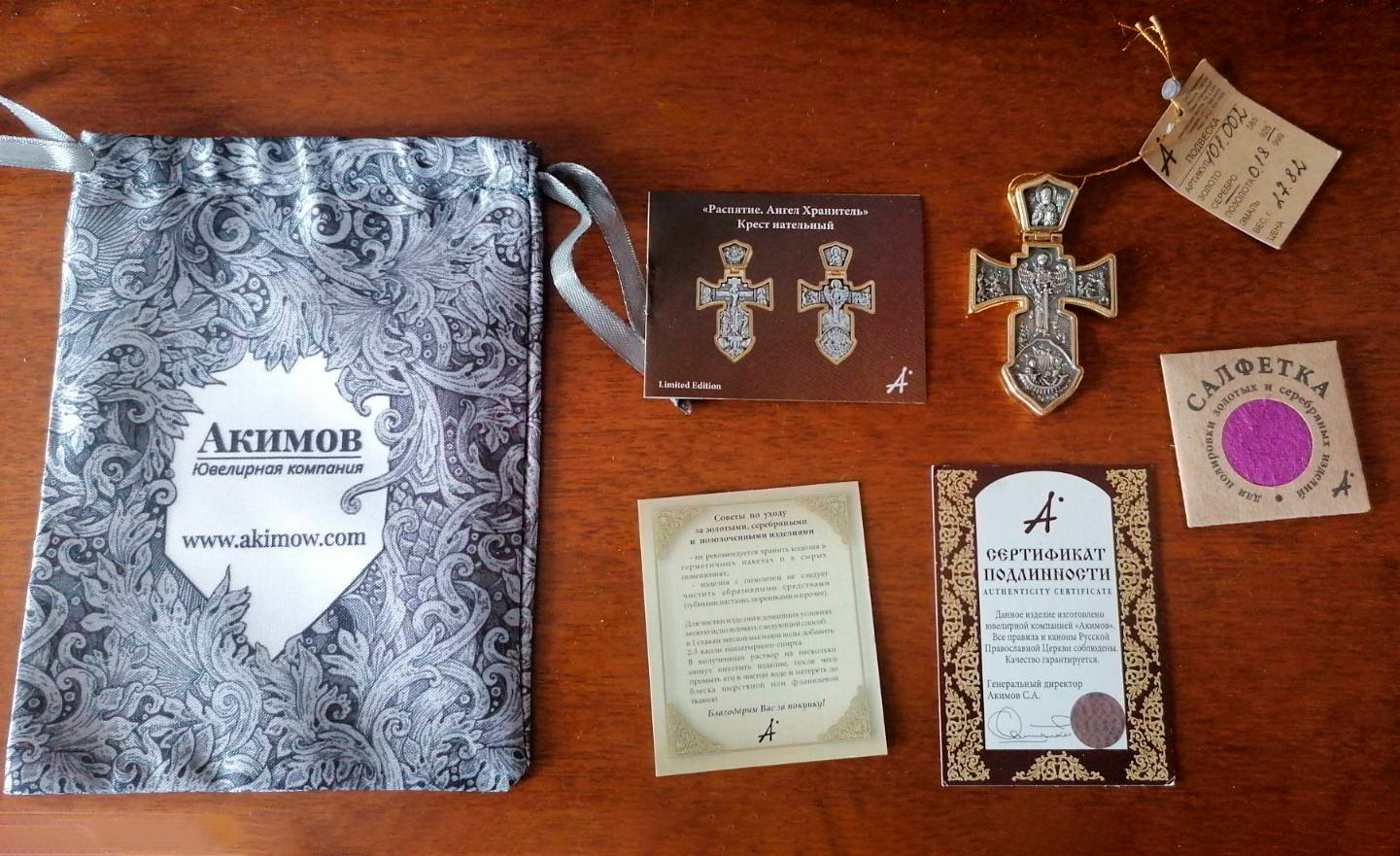Neck Cross Akimov 101.049 «The Lord Almighty (Pantocrator). The Icon of the Mother of God «Seven Arrows»

- Product with tag and seal
- Certificate of authenticity with hologram
- Product description book
- Jewelry Care Memo
- Canvas bag with the «Akimov» company logo
12 months warrantyGuarantee for all purchased goods in our online store is 12 months.
Tracking numberYou receive a Track Number to track each step of the delivery of your order.
Return and exchange - no problemYou can return the items purchased within 14 days. The goods must be in normal condition and have all the factory packages.
Different payment methodsPayment cards VISA and MasterCard, Google Pay, Apple Pay, Visa Checkout, Masterpass
Best priceWe are proud of our prices, hundreds of customers check them every day, which give a choice to our online store!
- Silver (925). Gilding (999).
- Miniature relief, casting, gilding, niello, handwork.
"A small cross with Christ Pantocrator on its obverse, and the icon of the Mother of God ""Seven Arrows"" on its reverse is made in Christian art traditions of Vladimir and Sudal` Russia of 12th -13th centuries. Images of Christ and of the Mother of God were created in 6th and 18th centuries, correspondingly.
The iconography of Christ as the Lord Almighty with a book in His left hand and the right one raised in the act of benediction appeared in Byzantium. In that way the Lord is pictured on the most ancient of all icons of Him, which is extant and now being in St. Catherine's Monastery of Mount Sinai. Up to now this image remains one of the most worshipped ones in Orthodoxy.
The book in Christ’s hand is one of the most diverse symbols in Christian art. In the first place it undoubtedly is the image of Gospel, of the New Testament, i.e. a new treaty, new agreement that was covenanted between God and people: “A new commandment I give unto you: That you love one another, as I have loved you, that you also love one another”. (John 13; 34). The beloved disciple of Christ, St. John the Theologian, Apostle and Evangelist tells about this Commandment: “it should have been enough to fulfill only it”. But the book in Christ’s hand symbolizes not only Gospel. In the Bible the entire Universe, the entire God created world is often likened to a book. God creates the world by His Word, and only the Lord Himself may open this book of the good word of God, therefore it is symbolically spoken that it is a sealed book (Apoc. 5; 9). The image of Christ with the book is called “Pantocrator”, i.e. ruling (allegorically, keeping in hand) the entire world.
But the Lord keeps in His hand. The book symbolizes not only not the entire present-day world, but the future one that will be created after the Second Advent and Doomsday. The Lord Almighty, Pantocrator, master of human destinies holds the Book of Life. Woe is to those whose names lack therein – the Apostle John says – retribution of God will befall them.
The icon of the Most Holy Mother of God that is on the cross reverse appeared well after, but by inward content it is close to the Lord’s image on the cross obverse.
Since the end of 18th century there are known two different icons of the Mother of God, having very similar iconographic decision (they differ in position of one of the arrows) – “Seven Arrows” and ""the Softening of Evil Hearts"". Both are often called ""Simeon's Prophecy"" due to this similarity, and because both has been painted on the basis of the Gospel story about the Presentation of the Lord.
According to St. Luke, Apostle and Evangelist, the Holy Spirit had revealed to the righteous Elder Simeon the God-receiver that he would not die until he should behold the promised Messiah. “By inspiration from above”, St Simeon went to the Jerusalem Temple at the very moment when the Most Holy Mother of God and St Joseph had brought the Infant Jesus to fulfill the Moses Law on the fortieth day. St. Simeon took the divine Child in his arms (whence his nickname “the God-Receiver”), and giving thanks to God, he spoke the words repeated by the Church each evening at Vespers: ""Lord"
No posts found

